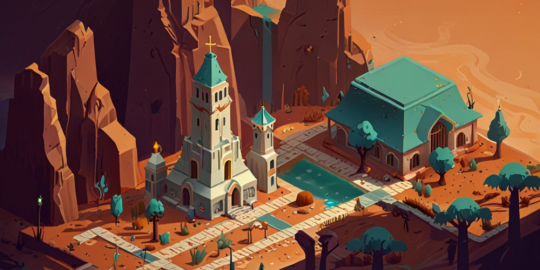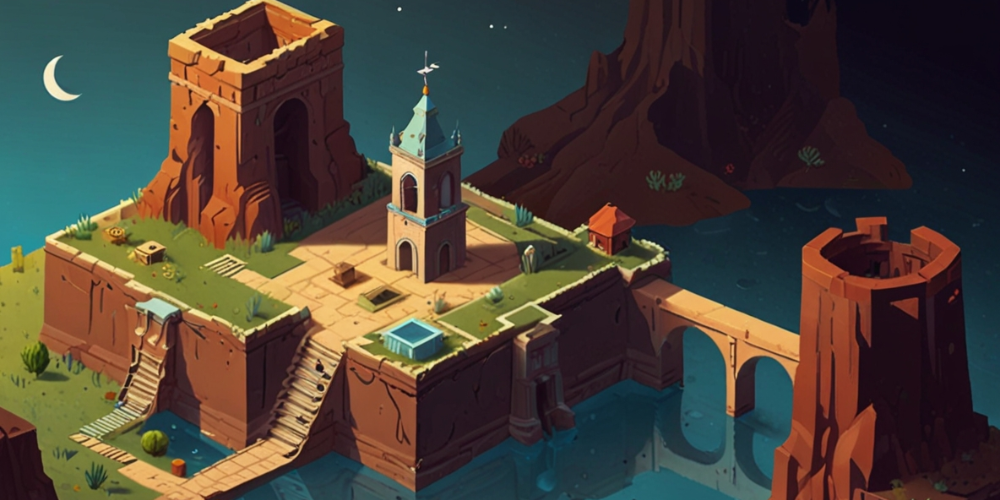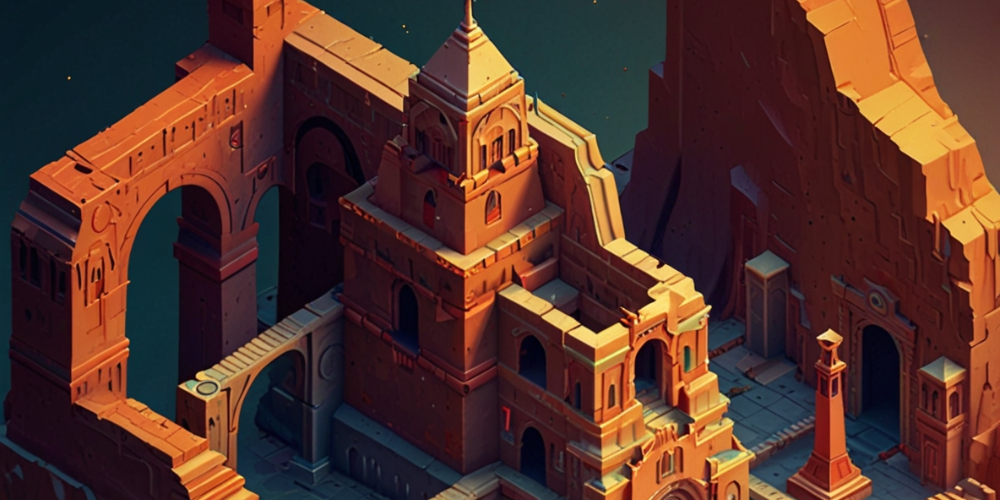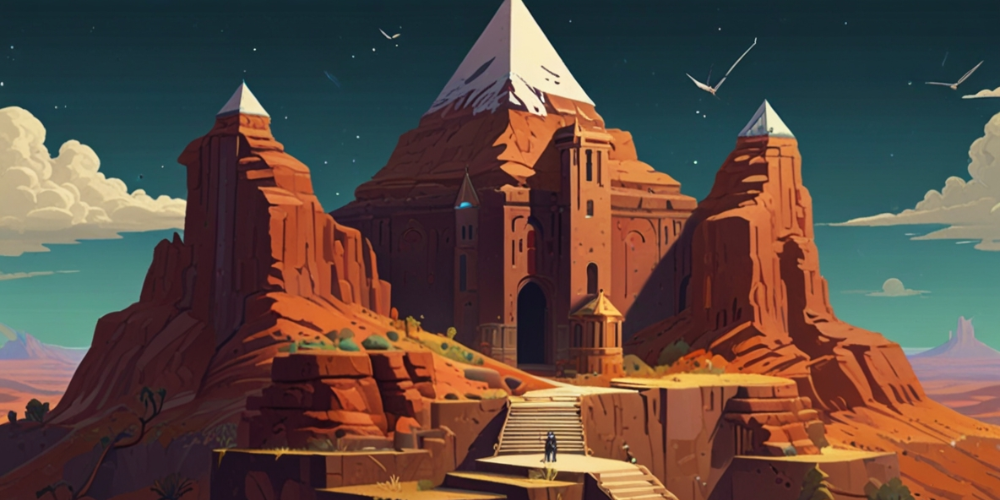
When I first stepped into the realm of Monument Valley, I was immediately captivated by its stunning visual storytelling and meticulous art design. The scenery revealed itself to me like a magnificent artwork, adorned with striking colors and captivating forms that appeared to challenge the very principles of physics. It was as if I had entered an artistic dream that blended reality with fantasy, and I found myself eager to explore every intricate detail.
The Use of Color
One of the first things that struck me was the remarkable use of color throughout the game. The palette was carefully chosen, with warm reds, deep blues, and soothing pastels all vying for attention. I could almost feel the warmth of the desert sun and the coolness of twilight just by looking at the vibrant landscapes. Each level conveyed a different emotional tone through color, creating an atmosphere that resonated deeply with me. The contrast between the bright skies and the earthy structures made for a visually arresting experience that perfectly set the mood for each puzzle I encountered.
Geometry as a Storytelling Tool
The geometric design of the structures truly amazed me. I marveled at how the game developers employed impossible shapes and optical illusions, which invited me to rethink my understanding of space. As I navigated the different levels, the sense of depth seemed almost hypnotic, drawing me into a world where gravity lost its meaning. The triangular peaks, pentagonal paths, and staggered platforms told stories of ancient architecture while encouraging me to engage intellectually with the environment. It was a fascinating blend of art and physics.
Character Design and Emotion
As I progressed, I couldn't help but notice the simplicity yet profound depth of the character designs. The protagonist, Ida, is rendered with minimalistic features, allowing her to serve as a vessel for my emotions. Her subtle animations—like her gentle movements and contemplative pauses—added a layer of humanity to the character. The connection I felt with her journey was deepened by her nuanced expressions, which captured the essence of awe, determination, and introspection. It was fascinating how a few lines and shapes could evoke such a strong emotional response within me.

Environment as Narrative
The environments in Monument Valley also serve as visual storytelling devices. Every stage offered a distinct storyline enveloped in a minimalist aesthetic. Fascinating landmarks and captivating structures guided me through my adventure, each filled with deep symbolism that ignited my interest. The contrasting environments—from serene valleys to towering monuments—allowed me to experience the evolution of Ada's story while revealing the cultural and mythical tapestry of the game world itself.
Musical Accompaniment
What added another layer to this visual feast was the enchanting soundtrack. As I moved through the landscapes, the music resonated perfectly with the visual elements, creating a harmonious blend of sight and sound. Delicate notes accompanied each step I took, heightening the emotional stakes and immersing me further into the world. The music guided my emotions, enhancing the visual storytelling as I solved puzzles and traversed breathtaking vistas. It became an inseparable part of my experience, echoing the beauty I encountered in the art direction.
Interaction and Engagement
Much of the storytelling was interactive, requiring me to engage with the environment. The challenge of manipulating the pathways and rotating elements turned architecture itself into a puzzle. Solving these intricate designs transformed the landscape into a narrative I could influence, making me feel like an integral part of Ada's journey. Each time I solved a problem, fruition sparked joy within me, connecting me personally to the virtual world. This design choice was an ingenious way to draw me deeper into the story being told.
Symbolism and Cultural References
Throughout my adventure, I grew increasingly aware of the underlying symbolism woven into the game's design. The art style drew inspiration from various cultures, blending aspects of ancient architecture and modern aesthetics. The references were subtle but profound, each serving to enrich the narrative without overshadowing it. As I explored, I found myself contemplating the deeply rooted themes of identity, exploration, and belonging. The visual elements often hinted at these larger ideas, enriching my experience even further.

Layering Visuals and Depth
The depth of the visuals in Monument Valley was captivating. Transitions between levels felt seamless, yet they provided a distinct shift in atmosphere. I experienced layers of meaning conveyed through visual depth, where foreground elements formed an intricate backdrop to the characters' journeys. I could almost lose myself entirely in the three-dimensional space, making each new section of the game feel like an entirely different dimension within the larger world. This layering created a sense of continuity, binding each unique experience together while keeping my curiosity piqued.
Minimalistic Aesthetic
The art design embraced minimalism in a way that felt both refreshing and profound. The simplicity of the shapes and forms allowed me to focus on the beauty of the environment and the mechanics at play. I appreciated how less often turned out to be more, with each visual element serving a purpose rather than cluttering the scenery. This deliberate choice emphasized the essential storytelling and heightened the puzzles I encountered—a well-thought-out strategy that made my adventure all the more impactful.
Illusions and Perspectives
As I engaged with the optical illusions scattered throughout the game, I gained a deeper appreciation for the art design. These illusions not only served as intriguing visual elements but also represented the thematic concept of perception. I learned that how I perceived space and movement shaped my experience, enticing me to examine my surroundings differently. The constantly shifting perspectives pushed me to adapt and rethink my approach, transforming simple navigation into an exercise in creativity and problem-solving.

Evolution of the Art Style
Throughout my journey, I noticed a subtle evolution in the art style as I progressed through levels. Each region introduced new colors, textures, and architectural motifs that kept the experience fresh and engaging. This evolution maintained my interest in the world, and I found myself excited when I reached a new area just to discover how the artistic elements would transform. It connected me more deeply to the experience, and I marveled at how effectively the designers crafted this visual narrative over time.
Incorporation of Shadows
Shadows played an indispensable role in the game's overall aesthetic. They weren't merely added for realism; rather, they contributed depth and dimension to the surfaces and structures. I noticed how shadows changed with my movements, illustrating the passage of time even within a still frame. This dynamic aspect invited me to interact with the environment in a way that felt tangible, further enhancing my immersion. The shadows told their own stories, revealing hidden details and guiding my attention like subtle hints in the narrative.
Conclusion as Part of an Ongoing Journey
In Monument Valley, visual storytelling emerges not just as a backdrop but as a critical part of the overall experience. The art design intertwined with every aspect—a captivating palette, intricate architecture, emotive character designs, and immersive soundscapes—wrapped me in an unforgettable adventure. Every component worked in harmony, creating a living world rich with meaning and beauty. As I reflect on my journey through this magical land, I realize that the visual arts were not merely elements of design but active participants in the unfolding story of my exploration.